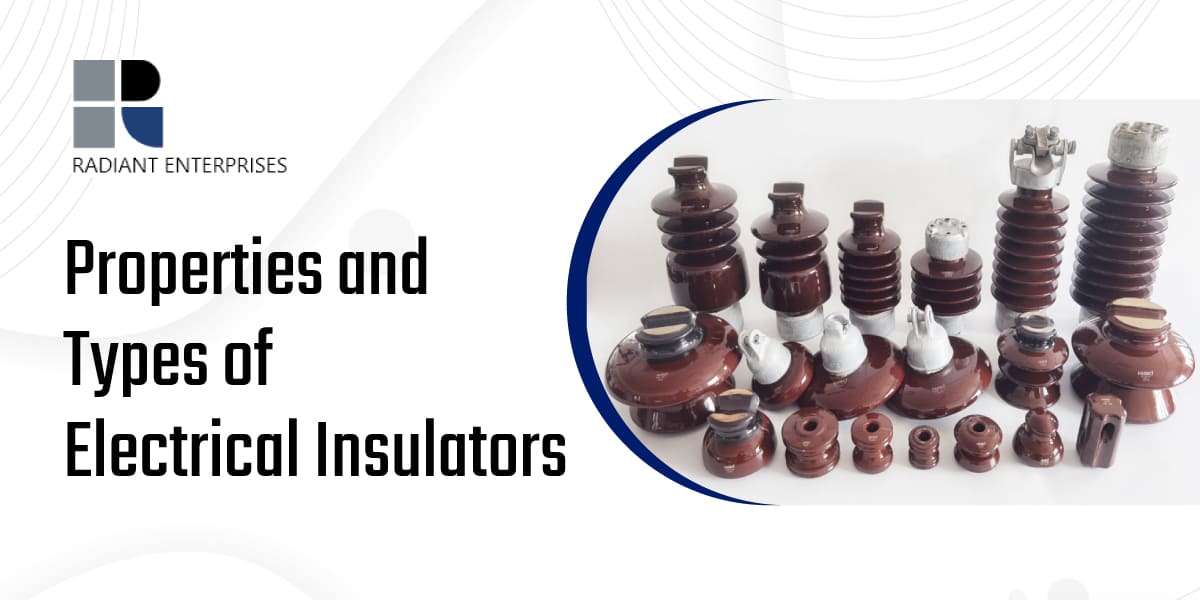
Fill all information details to consult with us to get services from us

Insulators are used to prevent electricity from leaking out of the conducting components or the powered conductor. In every electrical application, electrical insulation is crucial. As a result of the high resistance offered by an electrical insulator, no electrical current can travel through it. An effective insulating material will have certain characteristics, and we will go over those in this piece, as well as the various insulating materials, air gaps, the impact moisture has on insulation as well as the means of protecting electrical insulation from moisture.
Materials that offer strong resistance to the passage of electricity are called electrical insulators, and they are used to direct energy down the correct path within a conductor.
As there is no one material or substance that can fulfil all the requirements specified in the various uses of supporting insulators manufactured and supplied by one of the most prominent as well as reputed Support Insulator manufacturers in India, a wide variety of materials and substances can be characterised as insulators as well as needs to be employed in practice. Reliability, physical qualities, availability, cost, flexibility in machining activities, etc., are all factors to be thought about while assessing such needs.
Therefore, in some applications, great flexibility is required, and in others, the material used in insulation, concerning its performance, must act as a rigid mechanical portion to the conductor and may be positioned outside.
Again, insulating materials should keep their insulating properties for radios having large frequencies while withstanding a wide temperature range in electric heaters, with the upper limit reaching 1100°C in some applications.
The insulating materials used in the conductors of electrical machines, as well as transformers, must be malleable so that the thickness of the conductors may be kept to a minimum, and they must also be able to withstand an endless number of cooling and heating cycles without degrading.
The current flow toward the earth is regulated by insulators manufactured by one of the top-ranked Electrical Insulation manufacturers in India, which are placed on the conductor poles in overhead line systems. It plays a crucial functioning part in the lines of transmission. Materials like rubber, wood, plastic, mica, etc. can all be used to model an insulator. Materials such as glass, ceramic, polymer, PVC, steatite, etc. are commonly utilised in electrical applications. Although porcelain is the most commonly used material, insulators can also be made from glass, steatite, and other speciality compositions.
Materials like mica, porcelain, Teflon, paper, rubber, plastic, ceramic, polyvinyl chloride (PVC), glass, etc., are frequently used as electrical insulators. The following are examples of applications for insulator materials of various types:
These insulator types are commonly utilised in overhead electrical networks. To learn more about insulator materials, read this blog penned by one of the excellent Support Insulator manufacturers in India, Radiant Enterprises.
Long rod insulators consist of a porcelain rod protected by an exterior weather shield and terminated by metal parts. Long rod models have an advantage over shorter rod models because the components of metal that are present between the units can be eliminated. Both suspension and tension applications can benefit from the use of long rod types.
A stay insulator describes the material used in a guy wire (stay cable). Typically made out of porcelain, its shape prevents the stay cable from crashing to the ground should the insulator fail. It is also presented as a strain insulator in the shape of an egg.
A pin-type insulator is similar in concept to a post-insulator. There are more petticoats and rain shelters there. Although post-type insulators are most often used in substations, they can also be utilised for overhead lines in certain circumstances.
It is safe to use a post-insulator with voltages up to 132 kilovolts. station insulators, on the other hand, can be utilised in substations with both low and very high voltages. The insulators at the posts of many stations are linked together to produce larger voltages.
Glass insulators in the shape of pins were first used in 18th-century telephone and telegraph lines. In the nineteenth century, ceramic as well as porcelain insulators became widely used. They were found to have better protective properties than glass, and their use spread.
In response, toughened glass was introduced, and it quickly gained popularity due to its greater durability. Because of this, toughened glass is now commonly used. Toughened glass, unlike ceramics, never degrades and has a greater lifespan than its non-ceramic counterparts. Thus, discs made of toughened glass can be used as suspension insulators.
Fibreglass rods are encased in polymer weather shelters within polymer insulators. Silicon rubber is commonly used to make these polymer weather shelters. PTFE, EPM, EPDM, etc. are a few alternative materials that can be utilised for weather shelters. Silicon rubber insulators and composite insulators are two examples of polymer insulators. The weight savings over porcelain is almost 90%, and they are just as strong.
These insulators manufactured by one of the most reliable Electrical Insulation manufacturers in India feature polymer shields and fibreglass rods. The output is higher and they are lighter than the porcelain variety. PTFE as well as Silicon rubber are frequently used in the construction of these insulators.